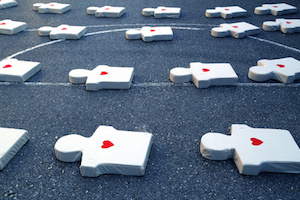 Most of us have completed a first aid course in our time, learning how to perform CPR on someone without a heartbeat. But there are a few myths about CPR and defibrillators floating around, so we got Mike Mander from Heart Saver (www.heartsaver.co.nz) to dispel them for us. Mike is a trained EMT (emergency medical technician) and runs customised first aid courses for businesses and community groups. As a volunteer firefighter for the past twenty years, Mike has performed life-saving CPR many times.
Most of us have completed a first aid course in our time, learning how to perform CPR on someone without a heartbeat. But there are a few myths about CPR and defibrillators floating around, so we got Mike Mander from Heart Saver (www.heartsaver.co.nz) to dispel them for us. Mike is a trained EMT (emergency medical technician) and runs customised first aid courses for businesses and community groups. As a volunteer firefighter for the past twenty years, Mike has performed life-saving CPR many times.
* MYTH: You’ll break the patient’s ribs doing CPR
* REALITY: It’s unlikely you’ll break ribs. To get a full chest compression, you need to push hard to get close enough to the heart to massage it – this is about 1/3 of someone’s chest depth. Chest compressions can only be effective if done in a fast and rigorous manner. You may hear the cartilage between the bones and the rib cage crackling when doing chest compressions, but this is ok. And if you do break their ribs? Don’t worry about it – they’ll be around tomorrow to thank you for it.
MYTH: It’s ok to do breath-less CPR
REALITY: Some people think you don’t need to do breaths with compressions. This is fine, unless you are working on a child or a drowning patient – those that have drowned can have low oxygen levels in the blood and also need mouth to mouth to displace the water that’s in the lungs.
MYTH: CPR can restart the heart in any situation
REALITY: In the case of a SCA (sudden cardiac arrest), less than 1% of people are resuscitated using CPR alone. Scarily, sudden cardiac arrest can affect anyone of any age, background and fitness level – it does not discriminate and gives no warning when it will strike. Twelve New Zealanders die from a SCA outside of hospital every day and when it does happen, everything is time critical. The chances of survival decrease 10% with each minute and the onset of brain impairment can begin after only four minutes. Of those 12 SCAs a day, a whopping 90% are fatal – three times greater than the national road toll. This is why AEDs (automated external defibrillators) are so important. They double the patient’s chance of survival.
MYTH: People can be accidentally shocked with an AED (defibrillator)
REALITY: It’s impossible. AEDs won’t work unless they establish a cardiac arrest rhythm on a person – and this is impossible to replicate/fake. AEDs are designed to first analyse the heart before determining if a shock is needed.
MYTH: You need to be trained to use an AED
REALITY: Not at all – the machine will step you through what to do with voice commands. This is particularly helpful in the case of public-access AEDs, where defibrillators are housed in a cabinet and allowed to be used in an emergency by passers-by. You may see these at places such as airports or stadiums or anywhere with a large amount of people.
MYTH: AEDs are expensive
REALITY: Ten years ago they were $4000 or $5000, but now they’re far more affordable. At Heart Saver our lowest-priced model is $1,895+GST.
MYTH: If I do CPR and do it wrong, I’ll harm the patient
REALITY: You’re better to do something than nothing. That patient will be better off receiving bad CPR than they would from no CPR. They’re going to die regardless, if you don’t help them. CPR will help keep bloody supply to the brain and keep blood moving around the body and organs. CPR, especially if performed immediately, can double or triple a patient’s chance of survival. Your efforts can only help.
MYTH: CPR always works
REALITY: Don’t beat yourself up if you don’t manage to save one through your CPR efforts. The actual success rate for CPR is somewhere between 2-7% for adults, depending on how soon it is performed after the patient has collapsed. But it’s important to try – it can double or triple their chance for survival and save their life.
More about Heart Saver: Heart Saver are AED stockists and are passionate about educating people about AEDs and the importance of them. With death from a SCA being three times more than the annual national road toll and the fact that it can happen to anyone, Mike is seeing a huge increase in interest in AEDs. While companies make up much of Heart Savers customer base, they also sell many personal AEDs, especially to people who have purchased them not so much for themselves but with the aim of being able to assist others if required. See www.heartsaver.co.nz for more information.









Join the Discussion
Type out your comment here:
You must be logged in to post a comment.